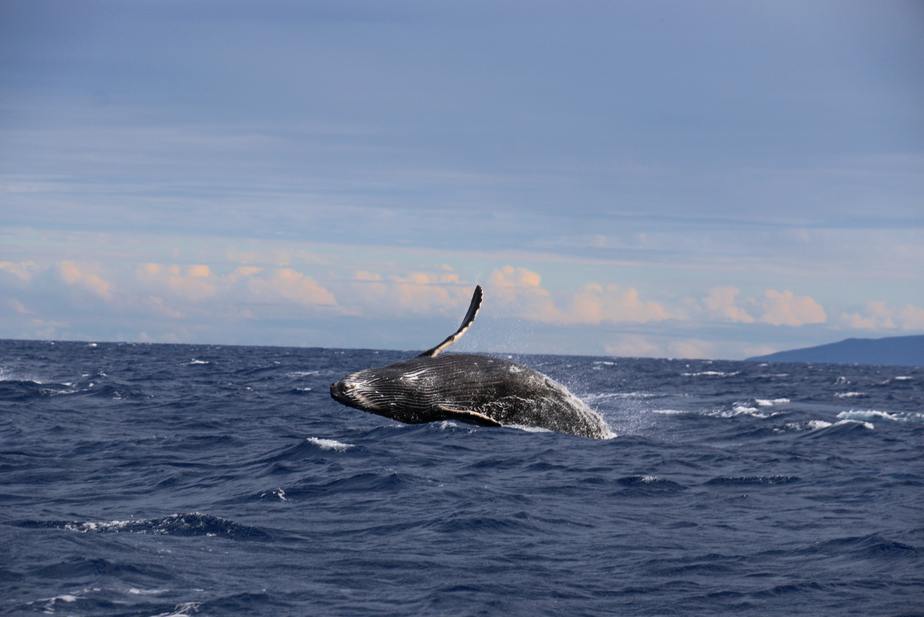Blog

Fish ID: The Humpback whale
- by Cindy
-
in Blog
-
Hits: 2757
everything you always wanted to know about "Humpback whale"
FUN FACTS
- You can estimate the age of the whale with from the amount and the layers of cerumen they have in their ears
- They can not breath through their mouth, only through their blowhole located on the top of their head
- Whales don't drink. They stay hydrated by metabolizing the water found in the food they eat
- For the first months of their life, like all mammals, whales nurse their youngs
- Humpback whales can jump up to 5 meters out of the water
IdentityWhere to find them?You can find humpback whales in almost every seas of the world. As they have a migrating cycle, depending of the season of the year they will move North or South to the warmer sea. As they need to go back to the surface to breathe, you can usually see them at that moment. But they are known to be staying at great depth. How long do they live?Its longevity is estimated at about 40 years. What size are they?On average, humpback whales reach up about 13 to 15 meters long. But some of them can reach up to 17 meters long. (And 25 tons) How many species?There are 13 different species of whales, including the humpback whale. How do they reproduce?Usually courtship rituals take place during winter month and the competition is fierce. Behaviors include breaching, spyhopping, lob-tailing, tail-slapping, pectoral fin-slapping, peduncle throws, charging and parrying. It seems that whale's songs plays also a role in the selection. |
How & what do they eat?Humpbacks feed primarily in summer and live off fat reserves during winter. They feed only rarely and opportunistically in their wintering waters. The humpback is an energetic hunter, eating mainly krill and small schooling fish such as salmon, herring, capelin, mackerel, pollock, haddock,etc. Humpback whales catch preys by forming a "bubble net" around their preys. Up to twelve whales can release air from their blowhole forming a circle around their prey that can go up to 30 meters of diametre. This wall of bubbles keeps the fishes inside an imaginary aquarium and the whales rush inside and can gulp up to a thousand fishes per strike. Another technique they use is that they flap their fins at the surface creating a shockwave that stuns their preys. How do they move?The humpback whales are a slow swimmer if you consider the marine kingdom. They swim up to 8km/hour by undulating their bodies. Who are their predators?The 2 main threat to humpback whales are first of all human and then orcas. Unfortunately, they are endangered and protected in many countries, but still illegaly hunt for their skin, oil, fat, etc. What people usually ignore?Many different aspects about the humpback whales are still mysterious for us. |
Comments
- No comments found




Leave your comments